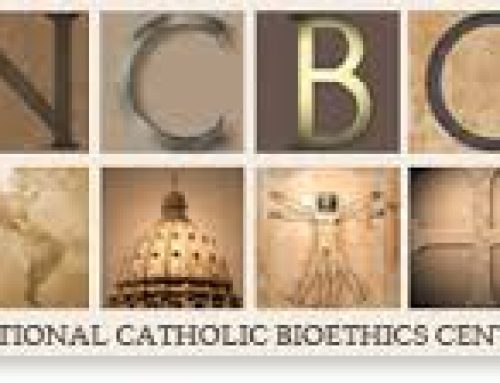Are human embryonic stem cells able to cure Neurological disorders? Scientists found new ways to treat Alzheimer’s, Parkinson’s and Lou Gehrig’s disease, by investigating Mad-Cow disease.

Dr. Edith Breburda
The bovine disorder, mad-cow disease may hold clues to find a treatment for many diseases. Among them are: Parkinson’s, Alzheimer’s, Lou Gehrig’s, Type 2 diabetes, Atherosclerosis, Cataracts, Cystic fibrosis, Emphysema. Some scientists found that all of the listed disorders have in common to be driven by certain deformed proteins. The phenomenon called “misfolding” is associated with deformation in the structure of particular proteins responsible for normal healthy functioning.
In the body proteins are formed into a three-dimensional shape. This distinctive folded shape is essential to carry out its functions, like carry out body processes or wading infections. Lack of proper development produces inactive, often toxic, proteins.
Major neurodegenerative conditions follow a similar pattern of such malformation and can be linked to so-called prion diseases, like mad-cow disease in bovines and the human form, called Variant Creutzfeldt-Jakob disease.
A prion, the smallest known infectious agent, is composed primarily of protein. It is unlike a virus or bacterium and contains no nucleic acid, that is, no DNA or RNA. Prion proteins occur naturally. They utilize an important protective function for the nerve cells. Infected individuals are carrying a variant of the normal proteins. That means a naturally occurring protein can convert into a disease-causing form.
In the infectious state, the native cellular prion proteins deform. An exponential cascade goes on to deform further prion proteins. Aberrant proteins spread aggressively from cell to cell. Prions aggregate in the central nervous system (primarily in the brain) and form plaques known as amyloids. They disrupt the normal tissue structure. This disruption is characterized by “holes” in the tissue with a spongy architecture due to the vacuole formation in the neurons. (see also Promises of New Biotechnologies, ISBN 0615548288 / 9780615548289).
Normally, the human variant of mad-cow disease isn’t grouped with diseases like Alzheimer’s, Parkinson’s or Lou Gehrig’s. Moreover, there isn’t any evidence that these neurological disorders are transmissible to people. Nevertheless, all the conditions can be linked to a similar malformation of proteins. What sets prion diseases apart is to cause aberrant proteins to spread aggressively from cell to cell and to induce healthy ones in other cells to also become deformed. However, evidence is given that other major neurodegenerative conditions have a similar pattern.
Stopping the cell-to-cell spread provides a new therapeutic target.
Deformed proteins can’t be mended. “Arrest it and we can potentially stop the disease,” says Dr. Neil R. Cashman, a neurologist in the Brain Research Center at University of British Columbia. He also works as chief scientific officer of a biotech company developing therapies, based on this method, to treat amyotrophic lateral sclerosis (ALS), or Lou Gehrig’s disease.
In young individuals, cells still have a mechanism to get rid of misfolded proteins. Aging and other factors interfere with this process. Researchers at the University of Pennsylvania, in Philadelphia, conducted laboratory work with mice to show how toxic proteins spread from cell to cell. They injected a synthetic version of a toxic protein associated with Parkinson’s disease into the brain of healthy mice. In their research paper published in Science in November, 2012, they showed that mice exhibited symptoms similar to those in human with Parkinson’s disease. The dopamine-making neurons in the animals vanished. Thus they described how the toxic protein spread from cell to cell in a prion-like fashion. Virginia Lee, leader of the reserach team and director of the Center for Neurodegenerative Disease Research at Pennsylvania University says: “Now we are testing an antibody therapy that would stop the toxic misfolded proteins from spreading in the mice. If it works, it could provide a possible therapy to test in people with Parkinson’s disease.”
2012, Todd Sherer, chief executive of the Michael J. Fox Foundation for Parkinson’s Research gathered scientist around him, who conduct research in protein misfolding in a number of neurodegenerative diseases. They explore ways to stop aberrant proteins from spreading. Dr. Sherer explained the latest papers led the foundation to “increase its support for this theory” in Parkinson’s diseases.
Such discoveries are also made in the Alzheimer’s arena. Kurt Giles, associate professor in the Institute for Neurodegenerative Diseases at the University of California, San Francisco, showed in his paper that the amyloid-beta protein, associated with Alzheimer’s shares prion like characteristics. A member of his research team is Stanley Prusiner, the institute’s director whose discovery of prions earned a 1997 Nobel Prize. They injected amyloid-beta protein into one side of mice’s brains. Using a light-generating molecule that lighted up the mice’s brains as the protein accumulated the researchers found amyloid-beta protein in the entire brain, and thus proofed, that the toxic protein set off a cascade of misfolding. “Amyloid-beta-protein misfolding triggered the spread of the disease from cell to cell,” explained Dr. Giles.
Research in that topic is also conducted by Dr. Avijit Chakrabarty, professor in the department of biochemistry at the University of Toronto. His team is interested in a type of disease called amyloid cardiomyopathy that is caused by misfloding of a particular protein. He says: “Clot blusters and other heart-diseases drugs typically don’t work in these patients because it is the misfolded protein clogging their arteries, not cholesterol. There is an existing drug to treat a version of the disease that tends to run in families. But it currently isn’t possible to distinguish cases that don’t involve a genetic mutation.” Dr. Chakrabartty and his group tries to develop a way to test for the misfolded protein in the blood and, once those patients are identified to treat them.
Research into Mad-cow disease is pointing to a possible new way of treating neurodegenerative disorders. Whereas, many scientists hoped to cure Alzheimer’s, Parkinson’s or Lou Gehrig’s disease, which affect millions of older peoples worldwide, by replacing diseased cells with stem cells derived from human embryos.
This research results suggest other therapeutic options may need to be explored, rather than exclusive embryonic human stem cell therapy, for these from cell to cell spreading diseases.
Edith Breburda DVM, PhD Promises of New Biotechnologies https://www.createspace.com/3698701 Books authored by Edith: https://www.amazon.com/author/breburda http://scivias-publisher.blogspot.com/







